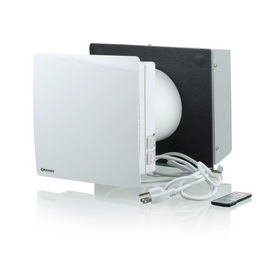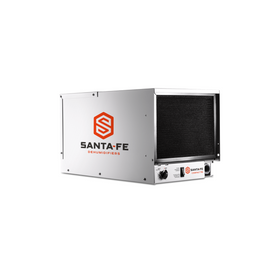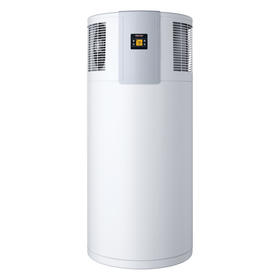- Home

Beyond Green and Sustainable
Let's start by explaining what we mean when we use these terms: green, sustainable, and regenerative.
"Green" Homes
Green improvements to a home are certainly welcome and needed first steps towards more environmentally friendly living spaces. Switching out your incandescent bulbs for LEDs or choosing not to use toxic carpet cleaners are simple ways to reduce your environmental footprint immediately.
Sustainable Homes
Sustainable homes, on the other hand, go beyond reducing immediate ecological impacts and endeavor not to do any more additional damage to the world that sustains us. This might take the form of a home producing renewable energy to limit dependence on greenhouse gas-emitting fossil fuels. Or, it could mean recycling all of the materials that flow through the home to reduce its waste stream.
Regenerative Homes
For example, our collective human footprint upon the planet has led to severely degraded environments that might take centuries to recover. While healthy and fertile topsoil, to name just one example, is essential to our civilization, we are losing around 1% of all topsoil each year. It is estimated that it takes between 100 and 500 years to replenish just one inch of topsoil naturally. In this example, a sustainable home will attempt not to cause any further topsoil degradation. But, might it be possible for the homes we live in to actively restore the damaged ecosystems through actions such as speeding up the process of building topsoil around the homes in which we live? This is what we mean by regenerative.

How to Make Your Home a Regenerative Part of the Landscape
Daniel Wahl is an independent sustainability consultant and a member of the International Futures Forum, who recently came out with a book called Designing Regenerative Cultures. In his book, he attempts to define ways our culture can move beyond green Band-Aids and substantially contribute to the regenerative work of the places where we live.
Wahl says: "Only when we reconcile nature and culture and move towards understanding ourselves as part of life's evolutionary journey and participants in life's life-sustaining processes are we beginning to work regeneratively." In the case of topsoil mentioned above, the regenerative home would compost its kitchen scraps into nutrient-rich, biological humus. That humus could be applied to their yard and garden to speed up the process of topsoil regeneration.
Below, we look at ways in which the homes we live in can become not only a sustainable, but a regenerative part of the landscapes and ecosystems where we live.

Plant Trees: Landscapes that Capture Carbon
Climate change is a reality of our modern-day world, and everyone should share in the responsibility of reducing the impacts of a hotter planet. Most practical climate change actions are focused on limiting the amount of carbon dioxide and other greenhouse gasses that we emit into the atmosphere. Driving less, designing more energy-efficient homes, and sourcing local building materials are all strategies that can help individuals reduce their carbon footprint.
The regenerative home will also look for ways to capture or sequester the excess carbon in our atmosphere actively. In the United States alone, it is estimated that over 40 million acres of lawns exist. Most of us learned back in elementary school that trees breathe in carbon dioxide and exhale oxygen. By planting an array of fast-growing trees around our yards, we can actively help to reduce the amount of carbon dioxide in the air.

Recycle Greywater for Habitat Restoration
Home construction is often responsible for habitat fragmentation. The placement of a home reduces habitat for a wide range of animals. It can also affect their migratory movements, which can lead to a reduction in local animal populations. Amphibians and other water-loving creatures are often most affected by homes that affect waterways and wetlands.
Greywater is the water that goes down the drain from showers, sinks, laundry, and dishwashers (not from toilets). The greywater from your home can be recycled into a mini wetland system, instead of flowing to a municipal sewer system or the septic tank. Greywater can be safely directed to the base of trees and other plants for more vigorous growth. The nitrates and phosphates in soaps and other greywater residues are great plant food. This mini wetland system will allow your home to re-create a natural habitat that allows for a high concentration of diverse animal species, including amphibians, insects, birds, etc.

Produce More Clean, Renewable Energy Than Your Home Consumes
Producing energy using solar panels, wind turbines, or other forms of renewable energy are great ways to limit your home's carbon footprint. However, the net-positive home seeks to produce more energy than it uses, including the energy for electric cars, if you are lucky enough to drive one of those. One great example of a net-positive home is the one shown in our header image, above, built by ALM Design Studio, in Minnesota.
If your home is connected to the grid, the excess energy you produce will eventually be used by other households. You will be contributing to an increase in the percentage of renewable energy in our national energy grid, which, in 2018, stood at 17%.
This regenerative practice will not only help our country collectively make the shift towards renewable energy sources, but it can also generate income for a home. Many local utility companies offer payback programs that allow you to sell the extra renewable energy that you give back to the grid.

Bottom Line
Regenerative homes and households will actively try to improve the damaged landscapes that our economy has caused. The regenerative home movement goes beyond the ethic of sustainability (do no harm) and seeks to help our homes become a restorative part of their landscapes.
Tobias Roberts
Tobias runs an agroecology farm and a natural building collective in the mountains of El Salvador. He specializes in earthen construction methods and uses permaculture design methods to integrate structures into the sustainability of the landscape.











